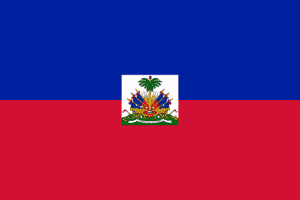We are going to go over some events that took place around that time. These events led to the Haitian revolution also known as Haitian independence. As you will see, there are many accounts of the events that surrounded the Haitian movements. Some historians have different takes on the Haitian revolution leaders, the Haitian revolution facts, Haitian revolution dates and even the Haitian revolutions causes.
Most of us probably heard or read
about the Haitian Declaration of Independence that was signed in the city of
Gonaives, on, January 1, 1804. However, there are things that during the Haitian
revolution that would surprise anyone that did not know about them.
Indeed, the declaration was signed in 1804. Later generations continued to
commemorate it on that day. Jean-Robert Constant says in 1904 President
Pierre-Nord Aléxis went to Gonaives to commemorate the 100th anniversary of
Haitian Independence Day.
Independence day celebration
In the year 2004, the then- lead of Haiti, President Jean-Bertrand Aristide seized the moment and held ceremonies to distinguish two centuries of Haitian Independence.
Constant went further to say that in 1954, President Paul Eugène Magloire who led Haiti for a part of the 1950s again, visited the city of independence to support a distinct mass in honor of that great day.
As you probably read from a previous post in Biohaiti, The Haitian flag was accepted and stitched by a seamstress in the town of Archaie on May 18, 1803. Catherine Flon was her name. On that day Haitians usually make and eat soup joumou. It is a pumpkin soup that was apparently only consumed by owners of the slaves.
The previous slaves of St. Domingue and the freedmen, who led a successful slave uprising in 1791 were not alone. When one reads records of the Haitian Rebellion movement, revolution leader heroes like Toussaint L’ouverture, Jean-Jacques Dessalines, Henri Christophe, Alexandre Sabès Pétion, Capois la Mort, Jeannot Billet, André Rigaud, George Biassou, Jean-François Papillon—turn up a great deal. But behind these warriors were an army of women.
Haitian women were involved too
Women militias like Sanite Belair, Jeanne Lamartinière, Marie-Claire Hereuse who later became Dessalines’s wife. Marcelle Desinor, a historian emphasizes the valor of women like Henriette of St. Marc, Suzanne Simon-Louverture, Toussaint L’ouverture’s wife, and uncountable women who continue to remain nameless and unspecified in the history of Haiti.
While the slave revolution of 1791 would be the first effective slave uprising in the new world, it was not the first effort.
We see that in Roadmap to Haiti’s Next Revolution, a Haitian revolution book by Rubens Francois Titus. He argues that as early as 1522, when Haiti was under Spanish domination, there had been a slave uprising movement, even though it was an ineffective one.
Slaves rebellion movements
Titus also points at 1679’s rebellion led by Padrejean a slave near the town of Port-de-Paix, and another one in the year 1697 in an area of Haiti called Petit-Anse and Quartier Morin led by anonymous slaves.
According to colonial skillful Jacques Cauna, by the time Padrejean was taken, he had murdered many including his owner and went non stop with his rebellion well into other parts of St. Domingue (Haiti) as well as La Tortue, Saint Louis and Port Margot. He led 25 other escaped slaves, and hid out in La Tarare, an unreachable mountain.
The buccaneers—coastal adventurers in Haiti—had to be recruited to put out this uprising. Even at that time, contends Cauna, some of Padrejean’s supporters managed to escape to the other side of the island.
Cauna also tells how in 1691, Jeannot Marin and Georges Dollot were sentenced to be burned alive after their conspiracy to kill everybody from babies down in Port-de-Paix was exposed.
In 1758, Makandal was scorched at the stake for arranging a wide-scale exterminating of white planters and their relatives. Makandal was a native of Africa, and according to some sources was brought up as a Muslim before being brought to Haiti as a slave.
He was an expert botanist and had a remarkable knowledge of plants particularly toxic plants. He was also fluent in Arabic allegedly.
What we did not know about Dessalines
Here is something that will shock you. Contrary to beliefs, Dessalines did not annihilate all the whites, or all the French after Haiti got its freedom. Jean-Jacques Dessalines in fact kept around the French clergy and members of the medical profession, according to others. He declared that every person in Haiti, and born of Haiti would endlessly be known as “black” irrespective of the color and racial heritage.
As noted above, his wife and numerous others hid white French conquerors and their relatives.
Did you know that Jean-Jacques
Dessalines was on the team of the French after the slave rebellion of
1791.
The Slaves Who Defeated Napoleon: Toussaint Louverture and the Haitian War, a
book by Philippe R. Girard who quotes communication from General Leclerc, a
French general, who once named Dessalines the “butcher of the blacks,” a denotation
of course that meant Dessalines’ cruelty was not limited merely to white
Frenchmen.
Girard sustains that in the years following the successful slave revolt, Dessalines left Toussaint L’ouverture and associated himself with the French, and while some historians claim that Dessalines was simply imaging to be on the French side, Girard points to actions on his part as being plain treacherous.
Dessalines cooperated with the French military and had his one-time friends and partners Sanite and Charles Belair, former slaves and a soldier-couple, publicly executed.
Girard even advocates that Dessalines set Toussaint up. That even aid in his arrest and subsequent deportation to France, seeing him as a rival for the eventual rulership of a freed Haiti. Girard also contends that Dessalines wrote to General Le Leclerc that Jacques Maurepas and Henri Christophe were traitors to France, in an attempt to get rid of these two compatriots.

Haiti defeated France
It is true, Haiti gained its independence from the country of France in 1804. The defeat was so embarrassing that it took France almost 25 years to acknowledge it. In the year 1825, President Jean-Pierre Boyer who was the then leader of Haiti signed a treaty with Charles X of France.
Charles X would agree to recognize Haiti’s independence on the condition that Haiti would recompense France $150 million francs. This amount was going to be taken from Haiti to reimburse the French planters who had lost their property and slaves in Haiti. A sort of indemnification. Boyer agreed.
According to some historians, this interchange made Boyer very, very disliked among his compatriots. But Boyer’s justification was no doubt that once France recognized that Haiti was a free country, Haiti would be recognized by the rest of Europe, as well as the United States.
For as late as the rule of Henri Christophe which Boyer succeeded, the French were threatening to send naval forces to Haiti. As a matter of fact, throughout Christophe’s reign the French where hoping to restore their rule on the island, and Louis XVIII the French king sent Franco de Médina in anticipations of doing so.
Christophe had de Médina executed in Cap Haitien for espionage. According to Let Haiti Live by Melinda Miles and Mary Eugenia Charles, not only was the protection put into effect, but the French contended on a 50% exemption on import taxes, that Boyer also agreed to.
The Haitian Declaration of Independence was a collective matter.
Jean-Jacques Dessalines could not read. He chose 2 secretaries that were highly educated. The 2 men were Félix Louis Boisrond Tonnère and Jean-Jacques Charéron. Historians like Thomas Madiou claim that Dessalines was displeased with earlier drafts of the declaration that were recited back to him. Boisrond Tonnere reportedly made this magnificent comment: “To write up the act of independence, we must have the skin of a white man for parchment, his skull for an inkwell, his blood for ink, and a bayonet for a pen!”
In 1851, this rather articulate man would write one of the first memoirs in Haiti Mémoires pour servir à l’histoire d’Haïti, par Boisrond-Tonnerre, précédés de différents actes politiques dus à sa plume et d’une étude historique et critique par Saint-Remy(Memoirs to Serve the History of Haiti by Boisrond Tonnerre, Preceded by Dissimilar Political Acts Attributed to Him and a Critical and Historical Study by Saint-Remy).
Songs and slogans were motivational strategies used by the men and
women of the revolution.
Many archivists attribute the expression “Koupé tet,
boulé kay” to Dessalines, as being
his motto through the revolution. Cut heads, burn down houses, in other words.
Grenadye a laso
Sa ki mouri zafè a yo
Pa gin manman, pa gen papa
Sa ki mouri zafè a yo
Soldiers on the attack
Those who die their affairs
There is no mother, no father
Those who die their affairs
The above is one of the battle songs that was popular during Haiti’s rebellion era that survives to this day.
The Haitian Revolution itself would go on to motivate a great deal of imaginary prose in addition to past accounts. Frederic Douglass would go on to work together with William Easton in the writing of Dessalines, a dramatic tale: a single chapter from Haiti’s history in 1893. William Wordsworth, the renowned British poet would write a poem in Toussaint L’ouverture’s honor. Amongst all the Haitian founding fathers, Dessalines appears to be the only one who did not have much written about him. The above-mentioned play by Douglass and Easton would essentially be one of the few written in his regards (either fictional or historical). In the year 2010, Author Isabel Allende published a novel The Island Beneath the Sea is set towards the closing of 1700s Haiti.
Haiti helped with the Louisiana purchase
The Revolution would also bring
other consequences.
“How did America manage to double its territory and end French colonial
ambitions in the New World without firing a shot?” questioned Thomas Fleming in
his book The Louisiana Purchase. The response could be summarized in one
word of course: Haiti. In 1803, France had to sell Louisiana in North America
to the United States for $15 million dollars to help recover its shocking
financial losses in Haiti. C.L.R James, author of The Black Jacobins, upheld
that The Haitian Revolution and Haitian Independence encouraged men like Nat
Turner and Vesey to initiate slave revolts in the United States.
Battle of Vertiere
The Battle of Vertières is quoted
by many scholars as being a pivotal moment in the fight for Haitian Independence.
Vertières was a fight fought on November 18, 1803 and General Rochambeau and
his troops had to request the slaves for permission to return to France.
Dessalines granted. Another clash involved the fort Crête-a-Pierrot, an
arsenal. According to Haiti, a Different Image by Nancy Toussaint,
the French reclaimed the Fort but loss 2 times many soldiers as the Haitian
forces.
The story of the soldiers from
Poland who converted to Haitians.
Historian Elizabeth Abbott records in her book The Duvaliers and Their Legacy
that the French hired experienced soldiers from Poland to help fight for them
in the war against the insurgents of Haiti. Instead, the Polish soldiers merged
with the Haitian side, and ultimately married into Haitian families, and their
descendants live to this day in an area of Haiti called Cazale.
Boukman Dutty, a slave and his supporters had a vodun (voodoo) ceremony in a place in Haiti called Bois Caiman. During the ceremony, a priestess unknown in some accounts, but called Cécile Fatiman in others, slit the throat of a pig and had everyone there drink its blood. Some accounts even claim that there was even human blood during the ceremony also. Boukman and all present there swore their loyalty to the god of their descendants and swore an oath to turn away from the God of the oppressors.
It would take a whole book to dig deep into the Haitian revolution. This was a just small scratch of the surface. We will surely be visiting this topic some more.

